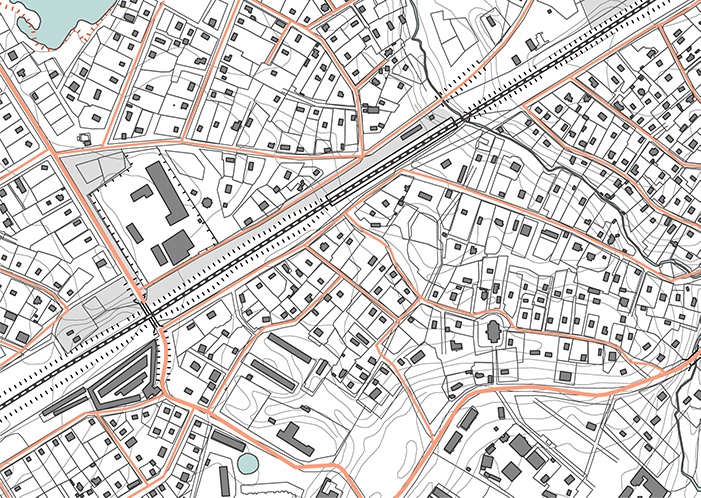Topographical Survey: Mapping the Earth's Varied Terrain
Wiki Article
Topographical Evaluating: Revealing the Intricacies of Land Surface for Informed Decision Making and Reliable Project Execution
If you have actually ever asked yourself just how designers and organizers accurately navigate the complexities of land terrain, topographical surveying is the solution. By utilizing state-of-the-art technology and experience, topographical property surveyors supply important understandings right into the elevation, contours, and functions of the land.Significance of Topographical Evaluating in Building And Construction
Your construction task's success counts greatly on the precise and comprehensive information provided by a topographical study's searchings for. A topographical study gives a thorough analysis of the land's qualities, including altitude, slope, contours, and existing frameworks.With the aid of a topographical survey, you can accurately identify the finest places for site development, such as placing buildings, energies, and roadways. It allows you to evaluate the expediency of your job and make changes as necessary. By recognizing the all-natural drain patterns and water flow, you can make efficient stormwater monitoring systems that prevent flooding and disintegration. Additionally, the study aids you determine any type of prospective ecological restraints or delicate areas that might need unique considerations during building.
Moreover, a topographical survey help in the estimate of earthwork amounts, enabling you to intend and budget plan properly. By knowing the existing problems of the land, you can prepare for the amount of excavation or fill needed, staying clear of unnecessary prices and hold-ups. The survey's comprehensive information enables accurate grading and leveling, making certain appropriate structure and security for your frameworks.
Applications of Topographical Surveying in Urban Planning
Topographical checking plays an essential function in city planning by giving important data ashore terrain, making it possible for informed decision making and reliable project implementation. Understanding the topography of the location is vital for developing functional and sustainable cities when it comes to city preparation. By carrying out topographical studies, urban organizers can properly draw up the existing features of the land, such as altitude changes, water bodies, and plant life.These surveys help in establishing the viability of various areas for development, permitting organizers to identify potential challenges and chances. For example, a topographical survey can expose areas prone to flooding or landslides, making it possible for coordinators to take needed measures to alleviate these dangers. It also aids in recognizing the most effective locations for framework growth, such as bridges, utilities, and roads, making sure effective connection and maximized land use.
Moreover, topographical studies help in protecting natural deposits and securing the setting. By understanding the existing land surface, coordinators can create eco-friendly rooms, parks, and leisure areas that balance with the surrounding environment. They can also identify locations with environmental worth, such as marshes or wild animals environments, and integrate actions to safeguard and protect them.
Benefits of Topographical Surveying in Ecological Studies
When carrying out environmental researches, it is vital to recognize the advantages of topographical surveying in order to gain valuable insights right into the land terrain. By performing a topographical study, you can accurately map the physical attributes of the atmosphere, including elevation modifications, inclines, and water bodies, which are important in understanding the effect of human tasks on the natural landscape. Topographical checking helps with the efficient style and implementation of ecological restoration or websites conservation jobs.Function of Topographical Surveying in Facilities Development
By including topographical evaluating information, you can efficiently plan and build facilities tasks with an extensive understanding of the land surface. The role of topographical surveying in facilities growth is important as it supplies accurate information regarding the physical attributes and qualities of the land. This data enables designers and architects to make educated choices pertaining to the design and format of roadways, bridges, buildings, and other structures.Topographical surveying aids identify possible difficulties and restrictions that may affect the building and construction process. By mapping out the existing contours, slopes, and elevation modifications of the land, specialists can expect any type of issues that may arise throughout construction (topographical surveying). This information allows them to create suitable techniques and methods to conquer these barriers, making sure the smooth implementation of the task

Using Topographical Checking for Resource Administration
try this To efficiently take care of resources, make use of the important data gotten via topographical checking to enhance decision-making and task implementation. Topographical checking offers vital info concerning the all-natural resources present in a provided location, allowing for effective resource management.
In addition, topographical surveys aid in source allocation and infrastructure planning - topographical survey. By precisely mapping the surface, surveyors can identify ideal locations for facilities advancement, such as roads, pipelines, and power transmission lines, reducing the disruption to natural deposits and enhancing resource removal or transport
Final Thought
To conclude, topographical surveying plays an important duty in various areas, consisting of construction, city preparation, environmental researches, and infrastructure advancement. By providing thorough info concerning land terrain, it allows informed efficient and decision-making project execution. It aids in source monitoring by recognizing and utilizing readily available resources properly. Generally, topographical surveying is an essential tool for professionals in different markets, promoting far better preparation and execution of jobs.Topographical surveying plays a critical role in urban preparation by providing necessary information on land surface, enabling notified decision making and effective job implementation. By conducting topographical surveys, city planners can properly map out the existing features of the land, such as altitude modifications, water bodies, and plant life.
When performing environmental research studies, it is crucial to identify the advantages of topographical surveying in order to get valuable insights right into the land terrain.By incorporating topographical surveying information, you can efficiently construct and intend facilities projects with a comprehensive understanding of the land surface. The role of topographical evaluating in facilities growth is vital as it gives accurate details about the physical functions and features of the land.
Report this wiki page